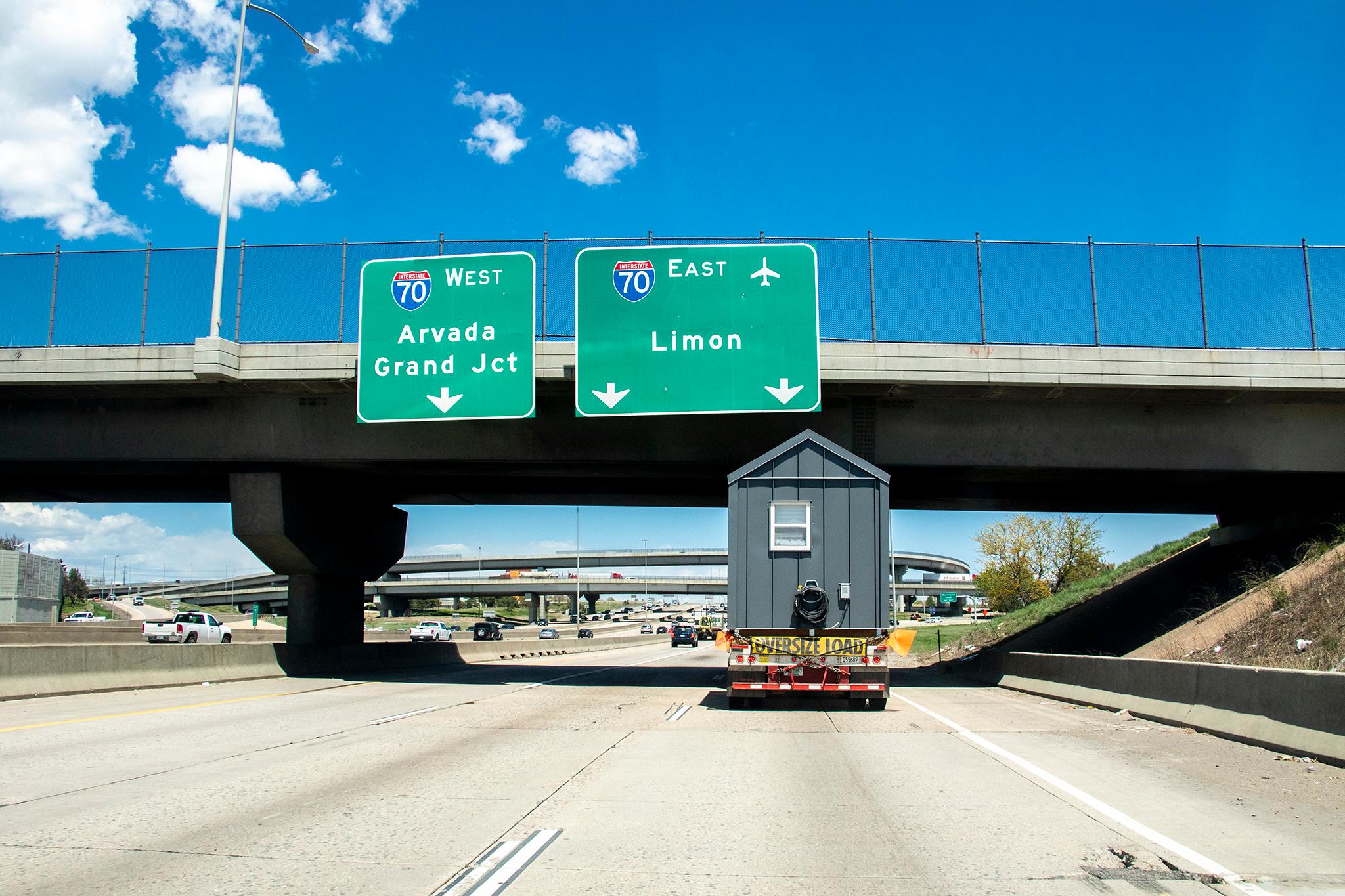Denver City Council adopted new zoning rules Monday meant to ensure neighbors are informed when they are in line for a temporary tiny home village and to clarify the process for establishing communities seen as part of the answer to homelessness.
The rules make the whole city, except for its open spaces, eligible to host temporary tiny home villages, collections of small, detached and private sleeping quarters whose residents share bathroom blocks and other areas and set their own community rules. Denver and other cities experiencing housing crises have embraced tiny home villages as alternatives to traditional shelters and a way to help people experiencing homelessness move toward permanent housing.
The zoning code revisions adopted with no dissenters were sponsored by Councilwoman-at-large Robin Kniech, who on Monday night credited people living in homelessness for hitting on tiny homes as an option and pushing an idea that was eventually taken up by city officials.
"It's really those who are experiencing homelessness who lit the torch," Kniech said.
While the new rules allow tiny homes villages everywhere in the city, in residential neighborhoods they can only be erected on properties that already serve the public. A church or community center, for example, might host a village on its parking lot. Neighbors would not be able to veto villages that meet city criteria.
Permits would allow a village to set up at a site for no more than four years. Once the initial permit expires at a given site, at least four years would have to pass before another village could be established there.
The changes were designed to make the process clearer both for people who want to build tiny home villages and those who would be neighbors to the communities. Scott Prisco, Denver Community Planning and Development's chief building official, has said that once the changes are in place his department would establish a faster-than-usual time frame for processing requests to build tiny home villages.
In Denver, so far only one organization, the Colorado Village Collaborative, has built any villages. Colorado Village Collaborative got permits for its Beloved Community Village under the city's "unlisted temporary use" rules, which offered no clear regulations or limitations, because the existing zoning code does not refer to tiny homes or tiny home villages.
Beloved Community Village opened initially in 2017 on private land near the 38th & Blake RTD commuter rail station after years of organizing and protest. The village recently moved to 4400 N. Pearl St. in Globeville because the first site was slated for a below-market-rate housing development.
Terese Howard, who helped build Beloved Community Village at its first site and is an organizer with the advocacy group Denver Homeless Out Loud, spoke during Monday's City Council meeting.
The new rules are "a pathway just to make this a little easier to have a place to call home," Howard said.
Beloved Community Village's move to city-owned land at 4400 N. Pearl followed a series of tense public meetings at which several Globeville residents opposed hosting the village. Some expressed concern at being rushed to accept the idea and others fear that their community would be threatened by people experiencing homelessness. Kniech has said the Globeville experience, as well as an unrelated discussion about the rezoning of a former AT&T site in Elyria-Swansea, helped inform thinking about how neighborhoods could be part of the conversation when a tiny home village is proposed.
Under the new rules, groups such as Colorado Village Collaborative will have to hold at least one community meeting before they submit an application to erect a tiny home village. They also must mail notices about their plans to council members in the districts where the village would be located as well as in districts within 400 feet of the proposed site and to property owners and residents who rent homes within 400 feet. Registered neighborhood organizations operating within 400 feet of the site must also get information by mail. Village sponsors also must reach out to service providers such as churches in the community.
Current rules in similar circumstances set a 200-foot limit and do not require that renters be notified. The outreach to service providers is also new.
"This is a new use," Kniech said Monday of imposing new hurdles. "People need more time to learn about it and understand."
Applicants must present summaries of the community meetings and plans that include how security will be handled and how the village communities will be governed.
A minimum size for each village sleeping quarters was set at 70 square feet, and a maximum occupancy at two people. No minimum parking requirement was proposed. The rules also address how far from the street and neighboring properties village structures must be set and how close they can be to one another, which would affect how many can be at any site. In addition, no more than 30 sleeping units would be allowed at any site in a residential neighborhood.
The new regulations for tiny homes grew out of an ongoing broader effort to revise the zoning code to address group living. Kniech separated temporary tiny homes to move faster on that issue.
The new rules were not written to address an issue that arose when a Colorado Village Collaborative village of eight homes was envisioned for the parking lot at Saint Andrew's Episcopal Church at 2015 Glenarm Place. In 2018 the city's Landmark Preservation Commission derailed those plans, saying there was no historical precedent for a tiny home village in the neighborhood. The landmark commission had a say because the church is in a historic district -- Clements, near downtown. A separate revision of landmark regulations approved by the City Council last month removed from the landmark commission authority over temporary structures such as short-term tiny home villages.
No one spoke against the rule changes during the public comment period Monday night. But the city did receive an email from a resident concerned that the revision "legitimizes public camping sites."
Correction: The limit on sleeping units at a given site was incorrectly characterized in a previous version of this story. It is only in residential neighborhoods where the limit is set at 30.













